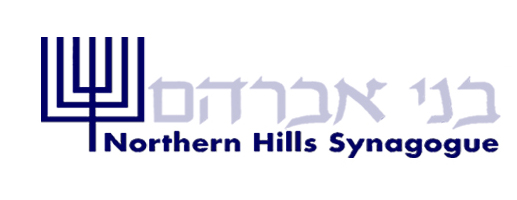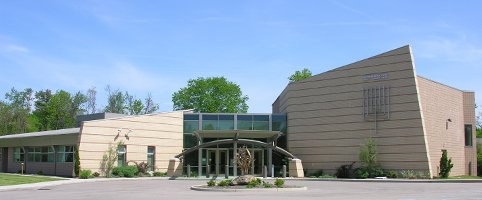11. Hallel (F68-70, G24-25). The liturgical rubric "Hallel" refers to Psalms ll3-ll8. These joyful expressions of thanksgiving are recited in the synagogue on the Festivals, Rosh Hodesh, and Hanukkah, and at the seder. Psalms ll3 and ll4 are said before the meal, and the rest of Hallel after it. It need hardly be said that Hallel should be sung; there are many traditional and modern melodies to which it has been set.
12. Second cup of wine (F70, G26). This cup accompanies the recitation of the first part of Hallel.
13. Rahtzah (F72, G26). We wash our hands in preparation for eating bread. While some families observe the practice that only the leader of the seder washes his hands before eating karpas, it is essential that everyone present wash, with a brakhah, before eating the matzah.
14. Motzi-matzah (F72, G27). Matzah is unleavened bread, and the regular blessing for eating bread must be said before eating matzah. As on the Sabbath and the other Festivals, we use two complete loaves (lehem mishneh), in this case, two complete matzot. In addition, we are specifically commanded to eat matzah on the first night of Pesah, and recite the special blessing for the performance of this commandment and eat of the third, broken matzah. Halakhah defines "eating" as the consumption of an olive's bulk of food within the time that one could eat a standard-sized loaf of bread (if one were eating bread only). Scholars have worked out many different ways of translating these talmudical measurements into those familiar to us. We ought to take care to eat enough matzah to make an impression on us (rather more than the bulk of an average olive of today), in a single act of eating, without talking or eating anything else. According to the Hazon Ish (Rabbi Abraham Karelitz, a leading authority of this century), one should eat half a matzah within 4 minutes.
15. Maror (F74, G27). We dip the bitter vegetable in haroset and eat it with the appropriate blessing. The same halakhic definition of eating which applies to matzah applies to maror as well.
16. Korekh (F74, G27). There is a dispute recorded in the Talmud, whether the matzah and the maror are to be eaten separately or together. We do both; paragraphs l4 and l5 above refer to the eating of matzah and maror separately; here we wrap (korekh) the bitter herb in the matzah and eat them together. We should include at least an olive's bulk of each of matzah and maror.
17. Shulhan orekh (The Passover Meal) (F76, G28). It is customary not to eat roast meat on the first two evenings of Pesah, in order to distinguish clearly between our meal and the eating of the korban Pesah, the Passover lamb, which was eaten during the time of the Temple, and which had to be roasted whole on a spit. Some people have the custom of not eating food made with matzah meal at the seder, so as not to detract from the importance of the matzah shel mitzvah. Some people have the custom of not eating food made of matzah or matzah meal soaked in a liquid (matzah shruyah or gebrokht) all during Pesah.
18. Tzafun or Afikoman (F76, G28). The word afikoman is clearly of Greek origin, and means either "dessert" or "after dinner entertainment". According to the Mishnah (Pesahim 10:8), we do not have afikoman; the last item on the agenda for Passover night was the eating of the lamb. The association of afikoman with the end of the meal has caused the term to be transferred to the last piece of matzah that we eat, which is a reminder of the Passover lamb. Once again, we should eat an olive's bulk. It will be noted that it is impossible for any considerable number of people to eat the proper quantity of matzah (at least three olives' bulk each) if only three matzot are available. The matzot on the seder plate are really for illustrative purposes only; one should supplement them from one's general supply of matzah in the house.
We should be careful to eat the afikoman before midnight (more precisely, before half the time between sunset and sunrise has elapsed). It is traditional for children to steal the afikoman and hold it for ransom; this practice is probably derived from the fact that the seder cannot be finished until the afikoman is eaten. (In some families, the leader of the seder hides the afikoman, and the children try to find it. I have mentioned this practice only parenthetically, because the other practice is attested as far back as the Middle Ages, while I never heard of this one until I came to Cincinnati - GLB)
Top
19. Barekh (Grace after meals) (F78-92, G28-33). There is a practice, not often followed today, of reciting the grace after meals over a cup of wine, and drinking the cup at the end of grace. This practice has, however, been made an integral part of the seder.
20. Cup of Elijah (F102-104, G33). After drinking the third cup of wine, we pour the fourth cup. We also pour a fifth cup, the cup of Elijah. This custom may be explained in one of two ways (or both of them). First, it may be noted that there is a minority opinion in the Talmud that we should drink five cups of wine at the seder; we do not follow that opinion, but, in deference to it, we pour a fifth cup of wine, to be kept until Elijah comes and decides, as tradition holds that he will do, whether or not we should drink it. Second, there is a tradition that Elijah, the forerunner of the Messiah, will come back on earth on Pesah, and this extra cup of wine is poured for him, "just in case".
21. Opening the door (F103, G33). It is customary to open the door of the house while saying the verses "sh'fokh hamatkha" ("Pour out Your wrath on the nations who do not know You ..."). This section of the haggadah was added during the Middle Ages. We open the door to show that we are not afraid of our enemies because God protects us. Some people sing the song Eliyahu Hanavi at this point; when Elijah comes to announce the advent of the Messiah, all strife and persecution will cease.
22. Hallel (F106-116, G34-39). We complete the recitation of Hallel, with the addition of Psalm l36 and the concluding blessing, birkat hashir ("blessing of the song"), and drink the fourth cup of wine. There are several different traditions concerning the proper arrangement of the psalms and blessings in this section of the seder.
23. Nirtzah (F134, G43). This passage, actually the end of a longer medieval poem, concludes the formal part of the seder; it expresses the hope that we may be next year in Jerusalem, that the entire Jewish people may enjoy the blessings of national, religious, and personal freedom in Eretz Yisrael.
24. Sefirat ha-omer (F132). In the days of the Temple, a sheaf of barley, measuring an omer (3.89 liters) was cut on the second night of Pesah and then forty nine days were counted until the first fruits were brought to the Temple on Shavuot. Today, we still count the days between Pesah and Shavuot each night, beginning with the second night of Pesah.
25. Songs. The songs which conclude the seder stem largely from the Middle Ages. Two of them, Vayehi b'hatzi halaylah ("And it came to pass at midnight") and V'amartem zevah Pesah ("And you shall say, it is a Passover offering") are piyutim (liturgical poems) taken from the traditional synagogue service. The last song, Had Gadya, written in artificial Aramaic, is often taken as an allegory for the history of the Jewish people, in which one conqueror succeeds another, until they are all superseded by the Messianic Kingdom of God.
26. Contemporary notes. It is important to relate the haggadah to our contemporary experience. This may be done through the seder conversation, or by including special readings in the seder.
Top
THE SEDER STRIPPED-DOWN
As popular and beloved as the Seder Leyl Pesah is, many people are daunted by the mass of material found in traditional Haggadot. Here is a guide for a stripped-down seder, which meets all halakhic requirements.
One should include all of the elements of the seder, as outlined in the mnemonic included at the beginning of Haggadot: kadesh (Kiddush), Ur’hatz (Hand-washing), Karpas, Yahatz (Divide the middle matzah), Maggid (Tell the Passover story), Rahtzah (Handwashing), Motzi-Matzah (Eat matzah), Maror, Korekh (Eat matzah and maror combined), Shulhan Orekh (The Meal), Tzafun (Eat the afikoman), Barekh (Birkat Hamazon), Hallel (Psalms), Nirtzah (Conclusion of the seder). The elements that may be abbreviated are Maggid, Hallel, and Barekh.
Here is a minimum Maggid section. The page numbers are those of the Passover Haggadah edited by Rabbi Nathan Goldberg, published by Ktav Publishing House.
1. “Ha lahma” (This is the bread) through “Avadim hayinu” (We were slaves): page 8, line 1, through page 9, line 13.
2. The Four Children and “Mit’hilah” (Long, long ago): page 10, line 10, through page 11, line 15
3. “V’hi she-am’da” (This promise): page 12, lines 1-3
4. The Ten Plagues: page 16
5. “Rabban Gamliel” through “V’nomar l’fanav”(Let us therefore sing): page 21, line 6, through page 24, line 12
The absolute minimum is “Rabban Gamliel” through “b’farekh” (rigorous): page 21, line 6, through page 23, line 9.
Although Hallel is included in the order of the seder after the meal, it actually begins before the meal. To abbreviate Hallel, I would suggest saying one paragraph from the section before the meal (page 24, line 13, through page 25, line 10), and one paragraph from the section after the meal (page 34, line 1, through page 38, line 4).
A shortened form of Birkat hamazon may be found in the back of Siddur Sim Shalom. If one doesn’t want to use a book other than the Haggadah, one should say from the beginning (page 28, line 1) through the end of the first b’rakha (page 29, line 7), and then each sentence that begins “Barukh atta Adonay” (page 29, line 17, and page 31, lines 2 through 5).
The songs in the seder, even such favorites as “Dayenu” and ”Addir Hu,” are optional.

